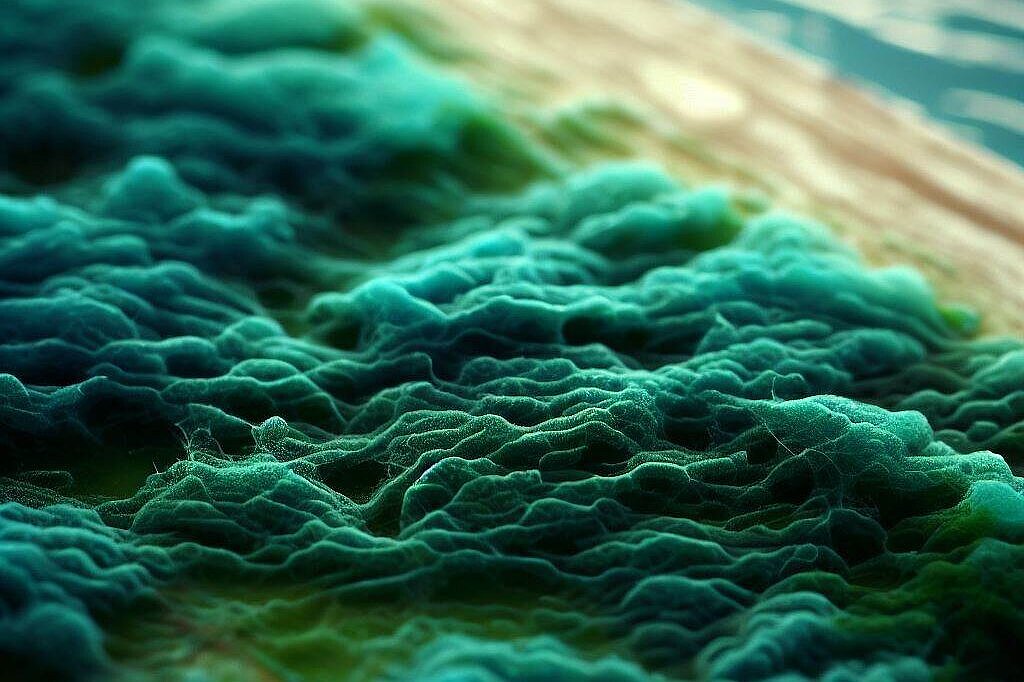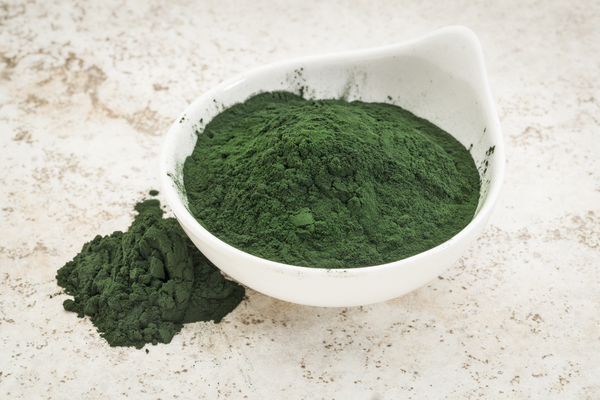Green algae

Green algae are a group of microorganisms that occur in fresh and salt water. They are among the oldest living organisms on earth and play an important role in ecology. But what do green algae have to do with dogs? In this article, you can find out more about this special ingredient and its advantages and disadvantages for your four-legged friend.
What are green algae?
Green algae are not plants, but cyanobacteria. These are bacteria that photosynthesize and produce oxygen. Green algae are very small and can only be seen under a microscope. They often form green layers of slime or blooms on the surface of the water or in damp places.
There are many different types of green algae, which differ in shape, color and habitat. Among the best known are spirulina, chlorella and AFA algae. They are often offered as food supplements for humans and animals as they contain many valuable ingredients.
What are the benefits of green algae for dogs?
Green algae are rich in proteins, vitamins, minerals, antioxidants and essential fatty acids. They can therefore supplement your dog's diet and support his health. Some of the possible benefits of green algae for dogs are
- Strengthening the immune system
- Improving skin and coat
- Promoting digestion
- Relieving inflammation
- Protection against free radicals
- Support liver and kidney function
- Regulation of the blood sugar level
- Improving brain function
How much green algae should my dog get?
Green algae are healthy, but also very concentrated. You should therefore only feed them to your dog in small quantities. The exact dosage depends on the type of algae, your dog's weight and its state of health.
The following guidelines can be used as a guide:
- Spirulina: 0.5 to 1 gram per 10 kilograms of body weight per day
- Chlorella: 1 to 2 grams per 10 kilograms of body weight per day
- AFA algae: 0.25 to 0.5 grams per 10 kilograms of body weight per day.
You can buy the green algae as a powder or in tablet form and mix it into your dog's food or give it as a treat. Make sure that you only use high-quality products from reputable manufacturers that do not contain any harmful substances or additives.
What are the disadvantages of green algae for dogs?
Green algae is not suitable for all dogs. There are a few factors you should consider before feeding your dog green algae. Some of the possible disadvantages of green algae for dogs are
- Allergic reactions: Some dogs are sensitive to green algae and show symptoms such as itching, rash or diarrhea. If you notice this, you should stop feeding green algae immediately.
- Overdose: An overdose of green algae can lead to side effects such as nausea, vomiting or headaches. It can also overload the organs, as the algae bind and excrete many toxins. Therefore, always adhere to the recommended dosage.
Green algae are cyanobacteria, not plants, and are often offered as a dietary supplement for humans and animals. They are rich in nutrients and can support the immune system, skin, coat, digestion and more in dogs. However, the dosage should be carefully observed, as overdosing and allergic reactions are possible.
If you notice any signs of hypersensitivity or poisoning in your dog, you should see your vet immediately. We are not a substitute for a vet, but we try to be as accurate as possible. Every dog reacts differently and we recommend you get a second opinion or consult your vet if in doubt.
Stay healthy and take good care of your four-legged friend!😊
Similar to Green algae
Chlorella is a freshwater microalgae that is one of the oldest living organisms on earth. It has a high content of chlorophyll, the green pigment in plants that is responsible for photosynthesis....
Cyanobacteria are microorganisms that photosynthesize and produce oxygen. They are among the oldest life forms on earth and come in different shapes and colors. Some cyanobacteria form long...
Seaweed is a collective term for various types of marine algae that grow in salty waters. There are more than 10,000 species of seaweed, which come in different shapes, colors and sizes. Some of the...
Spirulina is a blue-green algae that is one of the oldest living organisms on earth. It is found in salty lakes and waters and can feed itself through photosynthesis. Spirulina has a spiral...



